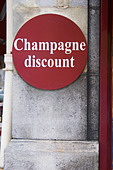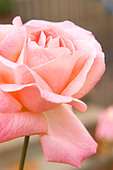The reports we’ve had from various vineyards are generally positive to very positive to outright jubilant. The growing season has mostly been excellent with good weather. Not much disease or other problems (even if there’s been some). So, in short, everything promises very well:
Philippe Bernard, Clos Saint Louis in Côtes de Nuits: “Our harvest started on September 12, a bit earlier than normal. The year has been overall good. Good winter, good spring, good summer, even if we’ve had a few problems with diseases. August was very sunny and warm and the grapes are very healthy. 2009 will be an excellent year for us.”
Champagne Duval-Leroy is also busy harvesting at the moment. Carol Duval-Leroy criss-crosses around champagne to visit the 120 (!) different presses they use. She confirms that the grapes are of very good quality: “I am very satisfied with this year’s harvest, we have healthy grapes with good sugar levels”.
Chablis is also in the middle of the harvest even if some growers have not yet started. Domaine Jean-Claude Courtault in Lignorelles was just about to start when we visited and Stéphanie Courtault confirms that it looks very promising.
Languedoc: “excellent quality, a bit less quantity than normal, perfect weather” says Domaine Rives Blanques, Limoux.
In the Rioja, reporting just before the harvest: promises very well but a very hot August blocked the phenolic ripeness. There’s a risk for some imbalances from that but if it is kept under control it will be a very good year.
Alentejo, southern Portugal: “overall good quality, some parcels will produce outstanding quality grapes” says Paolo Soares at Herdade da Malhadinha Nova.
Sud-Ouest: “Outstanding. Perfect. On par with 2005 in the whole region”, confirms Fabrice Durou at Château de Gaudou in Cahors.
We’ve now finished reading the final proofs of our new book. It’s been a very exciting project and hopefully we have now adjusted the last comma in the manuscript. It’s been particularly interesting since it is a wine book of a kind that is really missing, we think. There is really not much like it at all on the wine book market today. But I guess we’ll hear from reviewers and readers if they agree on that. If all goes according to plan it will be launched sometimes in mid November. What it’s about? Well, well keep that a secret until the launch has been decided.
This time of year is busy-busy with trips all round. Last week we’ve been to Champagne, Chablis and Burgundy. This week it’ll be Languedoc, cognac (!), and the Rhône Valley/Provence. Next week is Bordeaux and Alsace. But we’re two to share the things.
In a few weeks time we will also announce next springs ‘public’ travel program in English. We’ve just launched our Scandinavian schedule which includes Truffles & Wine in February, South African Wine & Food in March, Three Classics (Champagne, Chablis and Burgundy) as well as Bordeaux in April, and Tuscany, it’s Wine & Food in May.
And we also do custom tours both for private parties, travel agents, and professionals (importers, win trade, educational etc).
Get in touch if you want to know more.
Britt & Per
Read the entire BKWine Brief #74 here!
PS: Recommend to your friends to read the Brief or forward it to them !
Read more...




















